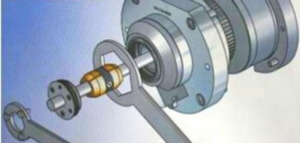The concept of quality is subject to a lot of interpretation. As a product manufacturer, your goal is to achieve quality that is exact: a state that can be defined, verified, and reproduced again and again.
The purpose of quality control is to not only prevent defects, but to also ensure that the parts are made to design specifications and will function properly.
A good QC program helps keep manufacturing on time and on budget, and also helps avoid product safety issues. And since the quality of your end product and application depends on quality components, your parts provider needs to have a thorough understanding of your requirements.
What parts requirements does your provider need to know?
Provide your manufacturing partner with a detailed engineering drawing that shows the requirements of the completed part. They also need to know which characteristics are most critical to meeting your manufacturing quality needs. Finally, specify your raw materials and sources. In other words, what do you have to start with to get the end result you need?
How will your requirements be achieved?
Your provider should document the components of their quality control system in writing, including the processes, procedures, and any other factors that can have an impact on quality. In metal parts manufacturing, as well as many other industries, ISO 9000 guidelines are used in establishing, documenting, and supporting quality control methods.
How will accuracy be maintained?
The ability to measure parts and provide assurance that they have been produced according to their specifications is another crucial aspect of manufacturing quality control. That’s why it’s vital you and your manufacturing partner use the same type of devices that are cross-calibrated correctly.
How will results be verified?
In addition to inspecting all incoming materials before production begins, your parts provider should establish inspection points along the manufacturing process, to maintain acceptable part quality and spot any variations before they have an impact on quality. A sampling plan is an important part of quality control, allowing a manufacturer to inspect a portion of a product lot to determine if the entire lot meets the customer’s quality requirements.
What completes a quality package?
Quality control doesn’t end when the parts come off the production line and pass inspection. The final step of the quality program is packing the finished components so that they are properly protected when shipped and arrive safely at their destination.
By aligning the unique requirements, variables, and challenges of your project with a QC program, you and your manufacturing partner can ensure you get quality parts for your application.
Metal Cutting Corporation. Providing custom precision metal components for over 50 years.





